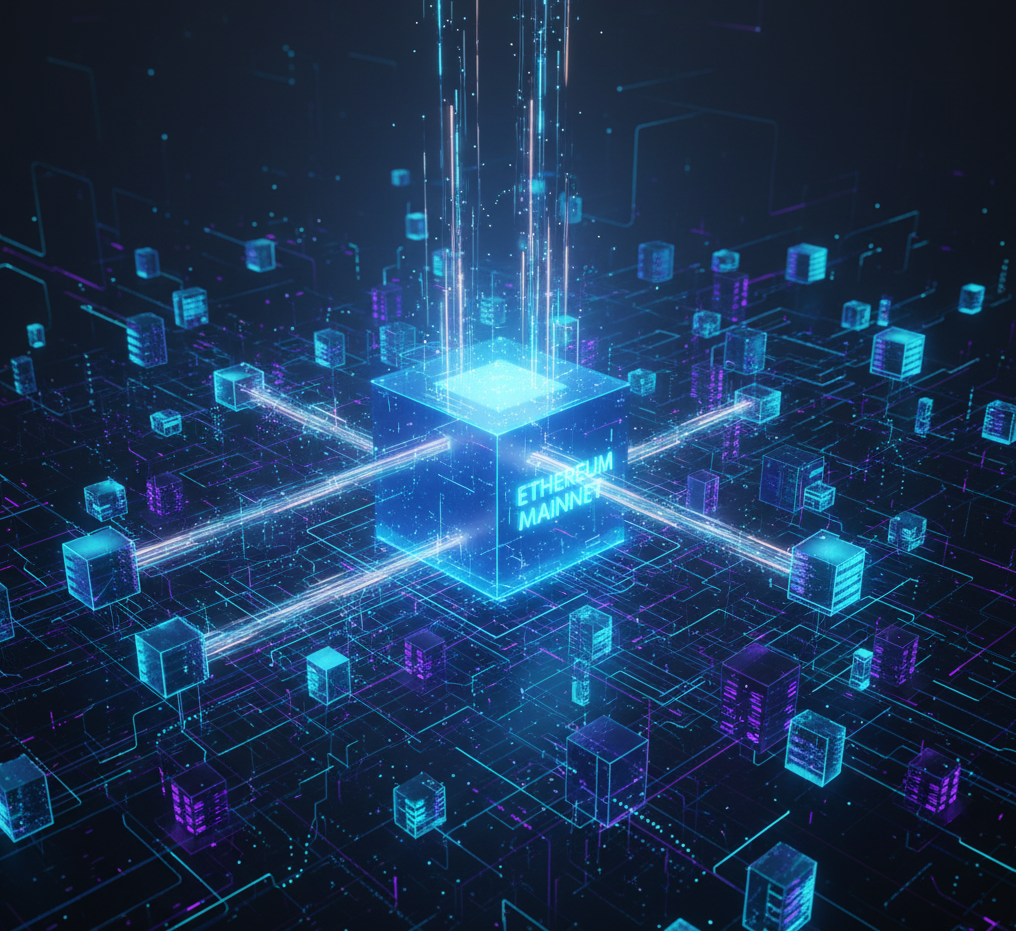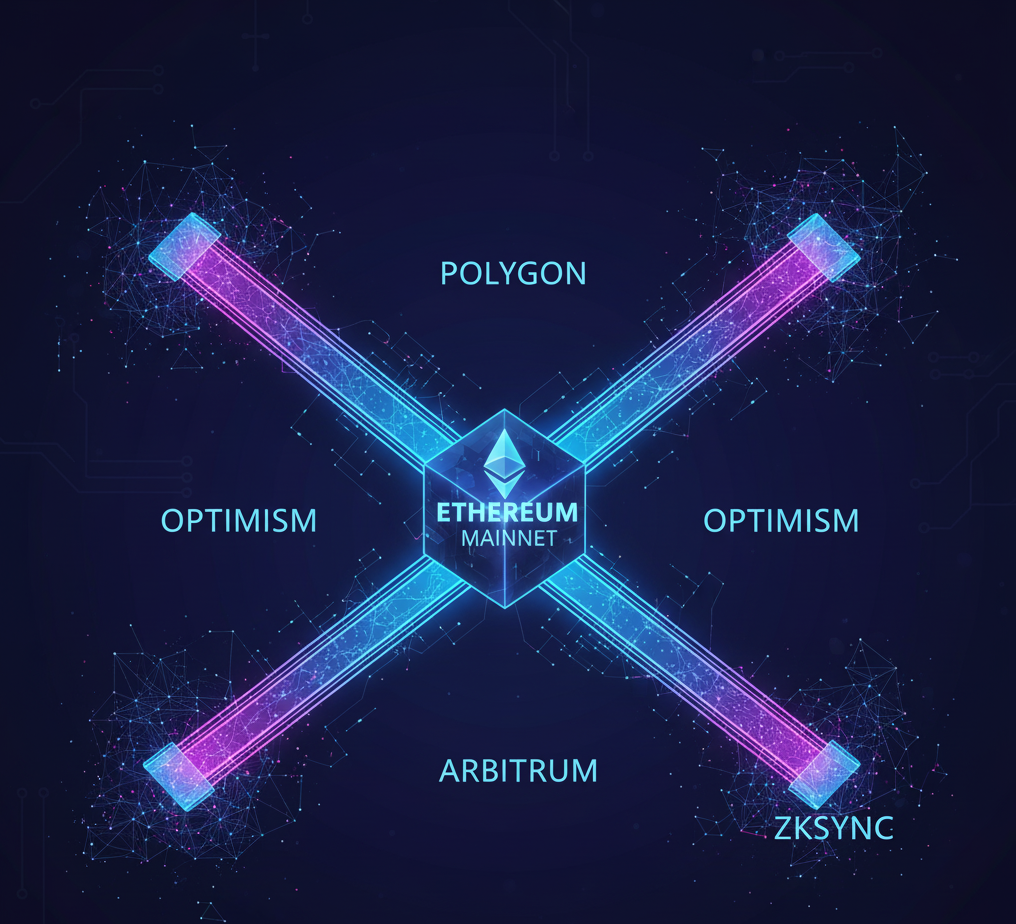Learn how Layer-2 networks work, why they matter, and how they make Bitcoin and Ethereum faster, cheaper, and scalable for the future of Web3.
Table of Contents
- Introduction: The Problem Layer-2 Solves
- What Is a Layer-2 Network? Simple Definition
- How Layer-2 Works: The Technical Breakdown
- Why Layer-2 Matters for Bitcoin and Ethereum
- Popular Layer-2 Solutions in 2025
- Challenges and Limitations of Layer-2
- Forecasts: The Future of Layer-2 and Blockchain Scalability
- Conclusion: Why You Should Care About Layer-2 Networks
Online advertising service 1lx.online
Introduction: The Problem Layer-2 Solves
As cryptocurrencies like Bitcoin (BTC) and Ethereum (ETH) gained popularity, their biggest challenge became clear — scalability.
When millions of people try to use these blockchains simultaneously, transaction speeds drop and fees skyrocket.
This is where Layer-2 networks come in.
Layer-2 solutions are like fast highways built on top of the main blockchain (Layer-1). They handle transactions off-chain, then send the final results back — combining speed and security.
In 2025, understanding how Layer-2 works is crucial for every crypto investor, developer, and newcomer who wants to grasp the future of blockchain technology.
💡 For more beginner-friendly topics, explore the Newbies Cryptocurrency section — your hub for simplified crypto education.
What Is a Layer-2 Network? Simple Definition
A Layer-2 network is a secondary blockchain or protocol that sits on top of an existing Layer-1 blockchain like Bitcoin or Ethereum.
It aims to increase transaction speed and reduce costs without sacrificing the security of the base network.
In simple terms:
Online advertising service 1lx.online
Think of Bitcoin and Ethereum as main highways.
Layer-2 networks are express lanes that process transactions faster, then merge them back onto the main road safely.
Key Benefits:
- Lower transaction fees
- Faster confirmation times
- Higher scalability
- Less congestion on Layer-1
Layer-2 doesn’t replace Bitcoin or Ethereum — it enhances them.

Online advertising service 1lx.online
How Layer-2 Works: The Technical Breakdown
To understand how Layer-2 works, let’s look at the core process that connects it to the main blockchain.
1. Transaction Bundling
Instead of sending every transaction directly to the blockchain, Layer-2 networks group thousands of them together.
This reduces the workload on the main chain and saves gas fees.
2. Off-Chain Processing
Transactions are validated off-chain using smart contracts or cryptographic proofs.
3. Settlement on Layer-1
After processing, a single compressed transaction (called a rollup) is recorded on the main blockchain.
4. Security Anchoring
The Layer-2 system inherits the same level of security from the underlying Layer-1 — ensuring data integrity.
Example:
- Bitcoin Lightning Network: Handles micro-transactions off-chain, finalizes balances on Bitcoin.
- Ethereum Rollups: Batch transactions, reducing fees and boosting efficiency.
This hybrid approach is the future of scalable blockchain infrastructure.

Why Layer-2 Matters for Bitcoin and Ethereum
Layer-2 networks are essential to the survival of major blockchains.
For Bitcoin (BTC):
Bitcoin’s Layer-2 solution, the Lightning Network, allows instant micropayments with near-zero fees — perfect for global adoption.
It transforms Bitcoin from a “store of value” to a medium of exchange.
For Ethereum (ETH):
Ethereum’s DeFi, NFTs, and gaming apps require high throughput.
Layer-2 networks like Arbitrum, Optimism, and zkSync help Ethereum scale by processing millions of transactions off-chain.
Without Layer-2, Ethereum gas fees would remain too high for mass use.
For Users and Businesses
- Faster and cheaper transactions
- Cross-chain interoperability
- More efficient decentralized apps (dApps)
Layer-2 is not just an upgrade — it’s a necessity for blockchain mass adoption.
Popular Layer-2 Solutions in 2025
The crypto world in 2025 is dominated by several Layer-2 technologies, each designed for specific blockchains.
🔸 Bitcoin Layer-2: The Lightning Network
- Processes transactions off-chain.
- Enables instant BTC payments.
- Ideal for daily purchases and micro-transactions.
🔸 Ethereum Layer-2 Ecosystem
- Optimistic Rollups (e.g., Optimism, Arbitrum):
- Bundles transactions, assumes validity until proven otherwise.
- Lower gas costs, easy dApp integration.
- Zero-Knowledge Rollups (zk-Rollups) (e.g., zkSync, StarkNet):
- Use cryptographic proofs for ultra-secure transaction compression.
- Faster, more private, and more scalable.
- Sidechains (e.g., Polygon)
- Independent blockchains connected to Ethereum via bridges.
- Excellent for games and NFT platforms.
- State Channels
- Direct peer-to-peer payment channels (used in the Lightning Network).
In 2025, Layer-2 networks are becoming the invisible backbone of Web3.

Challenges and Limitations of Layer-2
No technology is perfect — and Layer-2 still faces obstacles.
1. Security Risks
If implemented poorly, bridges and rollups can be hacked — as seen in several major incidents in 2023–2024.
2. Complex User Experience
Managing wallets and moving funds between layers can confuse new users.
3. Centralization Risks
Some Layer-2 solutions rely on centralized sequencers or validators.
4. Interoperability Gaps
Not all Layer-2s communicate seamlessly with each other yet.
However, developers are actively solving these problems with decentralized sequencers, cross-rollup bridges, and AI-driven fraud detection systems.
Every breakthrough in crypto brings new challenges — and opportunities.
Forecasts: The Future of Layer-2 and Blockchain Scalability
Experts predict that by 2030, Layer-2 networks will process over 90% of blockchain transactions globally.
🔮 Short-Term (2025–2026)
- Rapid expansion of Ethereum rollups.
- Layer-2 wallets become standard.
- Integration with AI-driven fee optimization.
🔮 Mid-Term (2027–2030)
- Seamless interoperability between rollups and mainnets.
- Global DeFi adoption powered by Layer-2 scalability.
- Bitcoin’s Lightning Network becomes embedded in payment apps worldwide.
🔮 Long-Term Vision (2030 and Beyond)
- Layer-2s evolve into Layer-3 ecosystems, combining privacy, speed, and modular blockchain architectures.
- Decentralized finance merges with AI, automation, and real-time micro-transactions.
“Layer-2 is not just about faster transactions — it’s about unlocking blockchain’s full potential.”
Conclusion: Why You Should Care About Layer-2 Networks
Layer-2 networks are the engines driving the next phase of blockchain growth.
They make Bitcoin payments faster, Ethereum apps cheaper, and the entire crypto ecosystem more usable for everyday life.
In short:
- Layer-2 = scalability, efficiency, and real adoption.
- It bridges the gap between technology and usability.
- It’s the reason why blockchains in 2025 can handle millions of users simultaneously.
If you’re learning about crypto, Layer-2 is where the future begins.
Stay updated through Ethereum News and Bitcoin News — where we track every major upgrade, from rollups to Lightning innovations.
Our creator. creates amazing NFT collections!
Support the editors - Bitcoin_Man (ETH) / Bitcoin_Man (TON)
Pi Network (Guide)is a new digital currency developed by Stanford PhDs with over 55 million participants worldwide. To get your Pi, follow this link https://minepi.com/Tsybko and use my username (Tsybko) as the invite code.
Binance: Use this link to sign up and get $100 free and 10% off your first months Binance Futures fees (Terms and Conditions).
Bitget: Use this link Use the Rewards Center and win up to 5027 USDT!(Review)
Bybit: Use this link (all possible discounts on commissions and bonuses up to $30,030 included) If you register through the application, then at the time of registration simply enter in the reference: WB8XZ4 - (manual)
